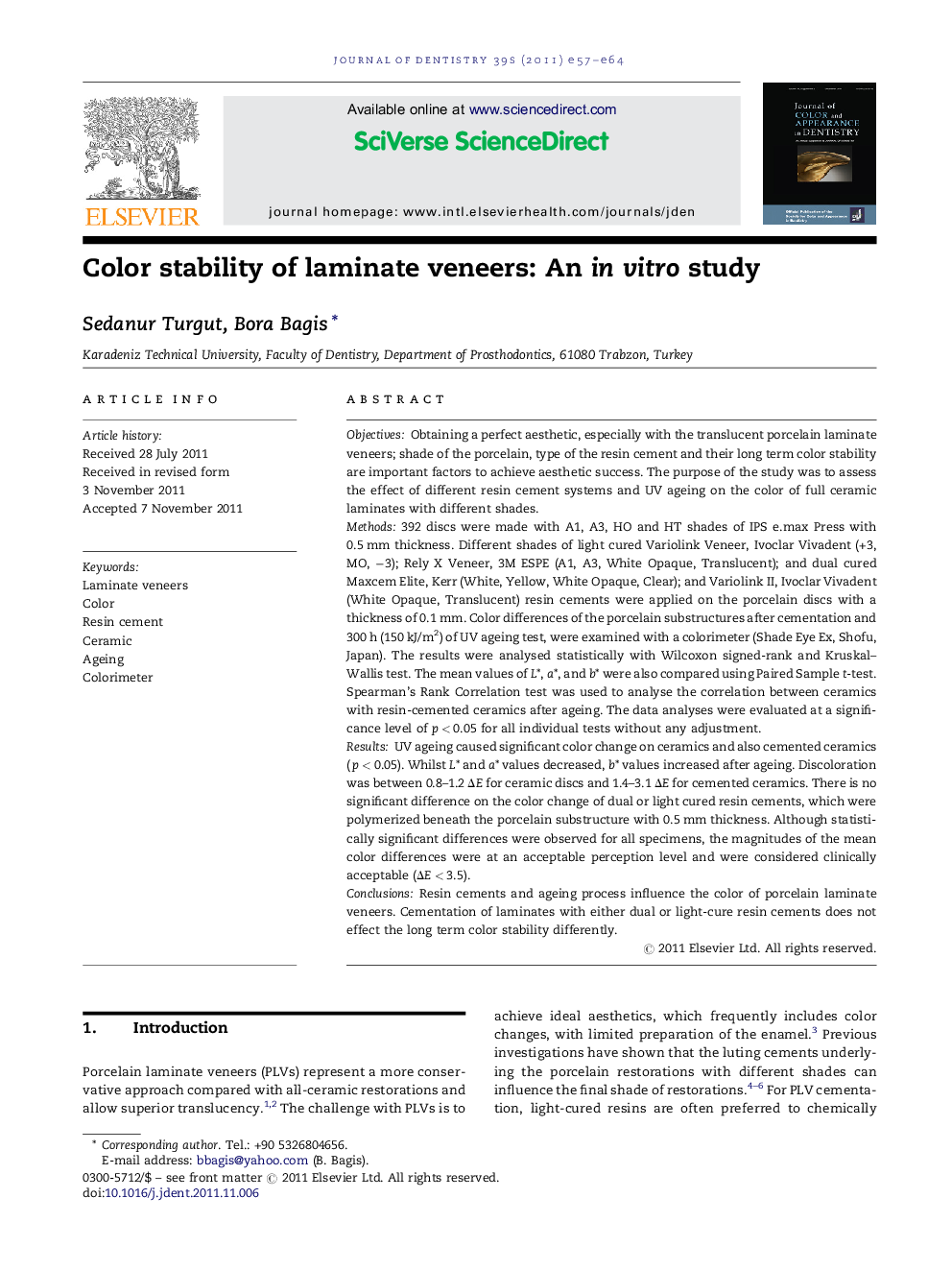| کد مقاله | کد نشریه | سال انتشار | مقاله انگلیسی | نسخه تمام متن |
|---|---|---|---|---|
| 6053900 | 1197231 | 2011 | 8 صفحه PDF | دانلود رایگان |

ObjectivesObtaining a perfect aesthetic, especially with the translucent porcelain laminate veneers; shade of the porcelain, type of the resin cement and their long term colour stability are important factors to achieve aesthetic success. The purpose of the study was to assess the effect of different resin cement systems and UV ageing on the colour of full ceramic laminates with different shades.Methods392 discs were made with A1, A3, HO and HT shades of IPS e.max Press with 0.5 mm thickness. Different shades of light cured Variolink Veneer, Ivoclar Vivadent (+3, MO, â3); Rely X Veneer, 3M ESPE (A1, A3, White Opaque, Translucent); and dual cured Maxcem Elite, Kerr (White, Yellow, White Opaque, Clear); and Variolink II, Ivoclar Vivadent (White Opaque, Translucent) resin cements were applied on the porcelain discs with a thickness of 0.1 mm. Colour differences of the porcelain substructures after cementation and 300 h (150 kJ/m2) of UV ageing test, were examined with a colorimeter (Shade Eye Ex, Shofu, Japan). The results were analysed statistically with Wilcoxon signed-rank and Kruskal-Wallis test. The mean values of L*, a*, and b* were also compared using Paired Sample t-test. Spearman's Rank Correlation test was used to analyse the correlation between ceramics with resin-cemented ceramics after ageing. The data analyses were evaluated at a significance level of p < 0.05 for all individual tests without any adjustment.ResultsUV ageing caused significant colour change on ceramics and also cemented ceramics (p < 0.05). Whilst L* and a* values decreased, b* values increased after ageing. Discoloration was between 0.8-1.2 ÎE for ceramic discs and 1.4-3.1 ÎE for cemented ceramics. There is no significant difference on the colour change of dual or light cured resin cements, which were polymerized beneath the porcelain substructure with 0.5 mm thickness. Although statistically significant differences were observed for all specimens, the magnitudes of the mean colour differences were at an acceptable perception level and were considered clinically acceptable (ÎE < 3.5).ConclusionsResin cements and ageing process influence the colour of porcelain laminate veneers. Cementation of laminates with either dual or light-cure resin cements does not effect the long term colour stability differently.
Journal: Journal of Dentistry - Volume 39, Supplement 3, December 2011, Pages e57-e64